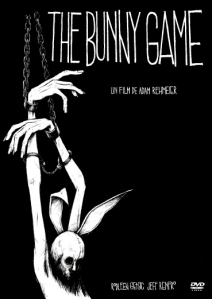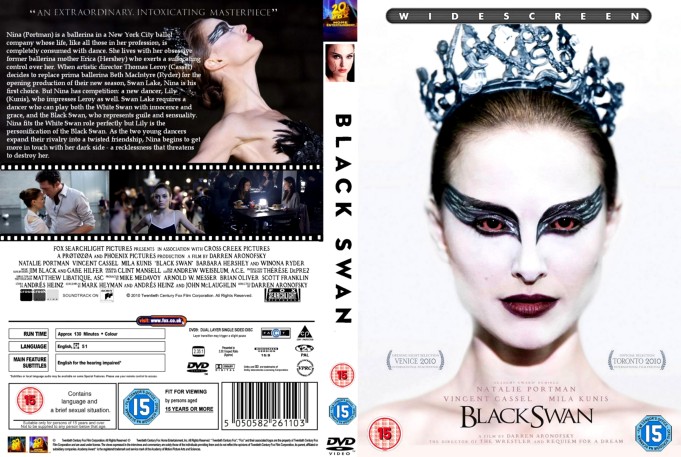http://www.youtube.com/watch?v=3ppqutUB23A&list=PLtOkXWKC6NZR7IeSOw8BGQWhim__6YSyA Complete
Rejection
BBFC DECISIONS: THE BAD STUFF
The content of a text does not always distinguish its suitable age certificate given by the BBFC. The content’s presentation, meaning and contextual relevance had to be considered.  The Bunny Game (Adam Rehmeier, 2012) is a US film about a prostitute being kidnapped, raped and violently assaulted by a trucker. The BBFC rejected the film and it is yet to receive a certificate. The violence towards the female protagonist is relentless in the piece. The BBFC’s Guidelines clearly set out the BBFC’s serious concerns about the portrayal of violence, especially when the violence is sexual or sexualised, but also when depictions “portray or encourage callousness towards victims, aggressive attitudes, or taking pleasure in the pain or humiliation of others.” The Bunny Game was seen to eroticise or endorse sexual assult through the emphasis on the woman’s nudity. The “lack of explanation of the events depicted, and the stylistic treatment,” may encourage some viewers to enjoy and share the man’s callousness and the pleasure he takes in the woman’s pain. The content may be titillating. In these ways, the film would be inconsistent to the Guidelines and would also risk potential harm within the terms of the Video Recordings Act, and would accordingly be unacceptable to the public. Next up is Lars Von Trier’s Antichrist (2009) which received an 18 certificate despite its horrific content. So what’s the difference between the content in this piece and The Bunny Game? Well the BBFC saw the violence in Von Trier’s film as “turn off” material, unlike Rehmeier’s. The “adult theme” of the movie helped contextualise the violence and its tone proved the violence not to be simulative.
The Bunny Game (Adam Rehmeier, 2012) is a US film about a prostitute being kidnapped, raped and violently assaulted by a trucker. The BBFC rejected the film and it is yet to receive a certificate. The violence towards the female protagonist is relentless in the piece. The BBFC’s Guidelines clearly set out the BBFC’s serious concerns about the portrayal of violence, especially when the violence is sexual or sexualised, but also when depictions “portray or encourage callousness towards victims, aggressive attitudes, or taking pleasure in the pain or humiliation of others.” The Bunny Game was seen to eroticise or endorse sexual assult through the emphasis on the woman’s nudity. The “lack of explanation of the events depicted, and the stylistic treatment,” may encourage some viewers to enjoy and share the man’s callousness and the pleasure he takes in the woman’s pain. The content may be titillating. In these ways, the film would be inconsistent to the Guidelines and would also risk potential harm within the terms of the Video Recordings Act, and would accordingly be unacceptable to the public. Next up is Lars Von Trier’s Antichrist (2009) which received an 18 certificate despite its horrific content. So what’s the difference between the content in this piece and The Bunny Game? Well the BBFC saw the violence in Von Trier’s film as “turn off” material, unlike Rehmeier’s. The “adult theme” of the movie helped contextualise the violence and its tone proved the violence not to be simulative.  On the other hand, Tom Six’s notorious sequel The Human Centipede 2 was rejected for the villain’s visual enjoyment of violence. Although audiences may be repulsed, the film focuses on his pleasure and shows how a horror film can inspire and encourage terrible and violent acts. Similarly, in The Killer Inside Me (Michael Winterbottom, 2010) viewers see sexual violence that becomes pleasurable to the characters involved. The “spanking” scene, for example, shows the characters’ enjoyment of the violent acts shown which the BBFC does not consider suitable. Despite this, it’s interesting to note that a film as horrific as Srdjan Spasojevic’s A Serbian Film is released. The child molestation involved in the piece and the sexual violence has lead to the film to be banned in large areas of the world. For example, it is banned in Norway on account of sexual representation of children and extreme violence in a fictional medium. One of the few modern-day movies to be banned in the country since Ichi The Killer (2001) and Grotesque (2009).The film was banned in Brazil but was supposed to be legally screened for the first time in the city of Maceió, Alagoas on a special Cine Sesi dawn screening in October 1, 2011; however, the company was forbidden to exhibit it by a legal action only a day before the screening. The film holds a record of 19 minutes of cuts in the United States in order to achieve an NC-17 rating. However, the film remains avaible on DVD as an 18 in the UK due to it being considered as “serious work” which is not intended to arouse. Behind the Candelabra (2013) starring Matt Damon and Michael Douglas was on the borderline of 15 and 18. The film’s focus on grooming gave the piece its edge, especially since it was based on historical record. The piece by Steven Soderberg, was given a 15 rating. Drug use in films is a big concern for the BBFC however, films such as Pulp Fiction, Trainspotting and Scarface have somewhat of a big focus on drugs but still remain available uncut. 2008 saw the release of David Gordon Green’s Pineapple Express and the representation of drugs meant the film’s theatrical edit had to be cut. The film showed young people enjoying smoking marijuana and this positive representation is highly frowned upon. We often see a negative portrayal of drugs and see their tragic effects however, here the BBFC criticised the piece. With the scene cut, the film appeared in cinemas as a 15 but the scene was restored in the DVD as an 18.
On the other hand, Tom Six’s notorious sequel The Human Centipede 2 was rejected for the villain’s visual enjoyment of violence. Although audiences may be repulsed, the film focuses on his pleasure and shows how a horror film can inspire and encourage terrible and violent acts. Similarly, in The Killer Inside Me (Michael Winterbottom, 2010) viewers see sexual violence that becomes pleasurable to the characters involved. The “spanking” scene, for example, shows the characters’ enjoyment of the violent acts shown which the BBFC does not consider suitable. Despite this, it’s interesting to note that a film as horrific as Srdjan Spasojevic’s A Serbian Film is released. The child molestation involved in the piece and the sexual violence has lead to the film to be banned in large areas of the world. For example, it is banned in Norway on account of sexual representation of children and extreme violence in a fictional medium. One of the few modern-day movies to be banned in the country since Ichi The Killer (2001) and Grotesque (2009).The film was banned in Brazil but was supposed to be legally screened for the first time in the city of Maceió, Alagoas on a special Cine Sesi dawn screening in October 1, 2011; however, the company was forbidden to exhibit it by a legal action only a day before the screening. The film holds a record of 19 minutes of cuts in the United States in order to achieve an NC-17 rating. However, the film remains avaible on DVD as an 18 in the UK due to it being considered as “serious work” which is not intended to arouse. Behind the Candelabra (2013) starring Matt Damon and Michael Douglas was on the borderline of 15 and 18. The film’s focus on grooming gave the piece its edge, especially since it was based on historical record. The piece by Steven Soderberg, was given a 15 rating. Drug use in films is a big concern for the BBFC however, films such as Pulp Fiction, Trainspotting and Scarface have somewhat of a big focus on drugs but still remain available uncut. 2008 saw the release of David Gordon Green’s Pineapple Express and the representation of drugs meant the film’s theatrical edit had to be cut. The film showed young people enjoying smoking marijuana and this positive representation is highly frowned upon. We often see a negative portrayal of drugs and see their tragic effects however, here the BBFC criticised the piece. With the scene cut, the film appeared in cinemas as a 15 but the scene was restored in the DVD as an 18.  2009’s The Woman in Black by James Watkins starred Harry Potter star, Daniel Radcliffe. Due to this actor that heavily attracted young audience members, filmmakers were keen to get a 12A rating despite the frightening content. The film would appear as a 15 uncut however, 6 seconds being taken out as well as a remix of the soundtrack (quite rare) lead the BBFC to release the film at the age restriction which the filmmakers hoped for. The Women in Black and Darren Aronofsky’s Black Swan sparked up a controversy of complaints due to their age rating. While the rating, the main female actresses (Natalie Portman and Mila Kunis) and the high-achieving ballet school appealed to teenage girls, the sexual content was arguably unsuitable for that particular audience. Nevertheless, the film was released in cinemas and on DVD as a 15.
2009’s The Woman in Black by James Watkins starred Harry Potter star, Daniel Radcliffe. Due to this actor that heavily attracted young audience members, filmmakers were keen to get a 12A rating despite the frightening content. The film would appear as a 15 uncut however, 6 seconds being taken out as well as a remix of the soundtrack (quite rare) lead the BBFC to release the film at the age restriction which the filmmakers hoped for. The Women in Black and Darren Aronofsky’s Black Swan sparked up a controversy of complaints due to their age rating. While the rating, the main female actresses (Natalie Portman and Mila Kunis) and the high-achieving ballet school appealed to teenage girls, the sexual content was arguably unsuitable for that particular audience. Nevertheless, the film was released in cinemas and on DVD as a 15. 
AN INTRODUCTION INTO MEDIA REGULATION
Let’s talk about the work on media regulation which are class has been going through in the past few days. First of all, what is media regulation? The media, whose regulation is being discussed, is the public means of mass communication, especially in the press, radio, music, television and film. Regulation refers to the whole process of “control or guidance, by established rules and procedures,” applied by authorities. “Public interest”, the “common well-being” or “general welfare”, is the goal for the regulation but also serves the needs of the market or for reasons of technical efficiency (for instance, setting technical standards). Regulation can be internal as well as external.  Media regulation begins with the application of the “printing press to book production from the mid-15th century onwards in Western Europe”. Content was regulated to combat heresy or dissent. This led very widely to licensing of all printers and/or the “requirement for advance approval by church authorities for texts to be published.” In Western Europe and North America, the history of media regulation concerned struggles against restrictions of publication between the 16th and 19th centuries which waged in the name of political freedom and human rights. For most of the world during the modern era, repressive and punitive media regulation in the interest of state power has been the norm. The invention of new media, electric telegraph, then the telephone and wireless and then public radio, lead to national laws being created concerning technical requirements (e.g. radio frequency requirements). During the 20th century, the cinema film was also established, typically regulated locally for reasons of safety (fire) and/or content (moral standards).
Media regulation begins with the application of the “printing press to book production from the mid-15th century onwards in Western Europe”. Content was regulated to combat heresy or dissent. This led very widely to licensing of all printers and/or the “requirement for advance approval by church authorities for texts to be published.” In Western Europe and North America, the history of media regulation concerned struggles against restrictions of publication between the 16th and 19th centuries which waged in the name of political freedom and human rights. For most of the world during the modern era, repressive and punitive media regulation in the interest of state power has been the norm. The invention of new media, electric telegraph, then the telephone and wireless and then public radio, lead to national laws being created concerning technical requirements (e.g. radio frequency requirements). During the 20th century, the cinema film was also established, typically regulated locally for reasons of safety (fire) and/or content (moral standards).  “Regulation by its very nature sets limits to freedom, which is the most basic principle of modern society.” There is no single reason why we should regulate and often the surface reasons conceal other purposes (e.g. the interests of the state).
“Regulation by its very nature sets limits to freedom, which is the most basic principle of modern society.” There is no single reason why we should regulate and often the surface reasons conceal other purposes (e.g. the interests of the state).
- The management of what is arguably the key economic resource in the emerging “information society”
- The protection of public order and support for instruments of government and justice
- The protection of individual and sectional rights and interests that might be harmed by unrestricted use of public means of communication.
- The promotion of the efficiency and development of the communication system, by way of technical standardization, innovation, connectivity and universal provision.
- The promotion of access, freedom to communicate, diversity and universal provision as well as securing communicative and cultural ends chosen by the people for themselves.
- Maintaining conditions for effective operation of free markets in media services, especially competition and access, protection of consumers, stimulating innovation and expansion.
Can everyone be treated the same?
Does the idea of “forbidden fruit” worsen this idea?
Does regulation infringe liberties?
Who decides what regulations are made?
What is one trying to achieve by regulating?
How do you regulate?
How do the “gate-keepers” make their decisions?

